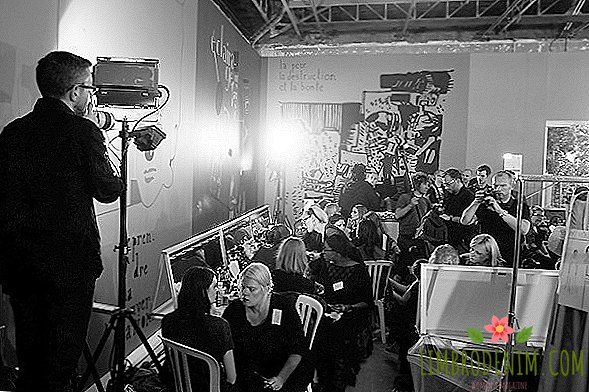Bookmarks: Virtual Semantic Brain Map
IN A NEW FOLDING TABLE We start talking about websites and online services - both useful and completely useless, but funny and amazing - which, in fact, should be added to favorites.

gallantlab.org
The human brain is an amazing system, it is precisely for this reason that studies explaining how this organ works are so popular. Scientists from the University of California at Berkeley have compiled an interactive three-dimensional map of the brain, showing which parts of our brain react when we hear a particular word. And you can look at it for a very long time.
Seven volunteers, among whom were the scientists themselves who conducted the study, for more than two hours listened to stories from the American radio program "The Moth Radio Hour". At this time, researchers used MRI to analyze the activity of the brain of volunteers and paid attention to exactly which areas of the brain respond to the meaning of words - their semantics.
The semantic dictionary, which in our mind links words with their meanings, is distributed throughout the cerebral cortex, in both its hemispheres. Scientists have discovered that each area of the cerebral cortex is associated with a few words on a close topic — for example, those associated with the categories family, building, or clothing. It turned out that the location of certain semantic fields corresponds to the function that these areas of the brain perform: for example, areas of the brain that are close to the visual cortex react to visual concepts such as color names. Several areas of the brain can react to polysemous words at once, depending on one or another word meaning. The nuances of the location of semantic fields in the brain of each research participant differed, but the common features were traced in all.
The three-dimensional model allows you to see which words a particular part of our brain reacts to. Each semantic field in the atlas is designated by its color: for example, green highlights areas of the brain that respond to words associated with visual perception, and yellow areas that respond to words denoting parts of the body. By clicking on a part of the brain of a certain color, you can see the specific words to which the research participants responded. Despite the fact that all this is reminiscent of an exciting game, the goals of scientists are much more serious: they hope that this research will help people with amyotrophic lateral sclerosis who cannot speak, begin to communicate with others using a computer.




